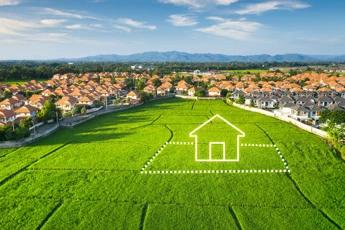Most people want to know if green mortgages are more expensive than traditional mortgages. The answer, like most things in life, isn't a simple yes or no. It depends on several factors, so let's unpack the details.
Benefits of green mortgages
Potentially lower interest rates
Many lenders offer slightly lower interest rates for properties with the highest EPC (Energy Performance Certificate) ratings, usually A or B. This can translate to lower monthly repayments, a significant benefit for your wallet, and the planet.
Improved property values
Research by Comparethemarket shows that properties with an A or B-rated EPC are worth up to 6% more than those with a lower rating.
Cashback incentives
Some lenders may incentivise customers with cashback rewards for A or B-rated homes. This can be a nice chunk of change to put towards further environmentally friendly retrofitting projects.
Lower energy bills
Houses with higher EPC ratings - and houses that are going to receive eco-friendly upgrades - often pay less on their utility bills as the homes are more energy-efficient and cost less to run.
Caveats of green mortgages
More expensive interest rates
While there are financial incentives that come along with a lot of green mortgage deals, some green mortgages can have more expensive interest rates than standard, non-green mortgages.
Limited choice
There are fewer options for green mortgages compared to standard deals, as not all lenders offer green mortgages - and so there is less variety out there.
Potentially expensive upgrades
There are cheaper retrofitting options out there, but the majority of upgrades that can raise a property’s EPC rating to A or B can tend to be on the more costly side.

The verdict: are they more expensive?
Ultimately, whether a green mortgage is "more expensive" depends on your individual circumstances and priorities.
-
For eco-conscious buyers of top-rated homes, the incentives can outweigh any minor drawbacks. You may find that the annual energy saving costs outweigh higher interest rates, but this is a decision that only you can make.
-
For budget-conscious buyers of lower-rated homes, conventional mortgages might be more readily available and cost-effective. Keep in mind, however, that you may still need to make improvements to keep it running efficiently. You can remortgage into a green mortgage, so if it’s an option you’re interested in exploring later down the line, you can.
The takeaway? Do your research, compare options, and weigh the financial and environmental benefits before deciding if an environmentally aware mortgage is the right shade of green for you. While the availability of green mortgages is relatively low at the moment, as green home improvements become more sought after to meet UK net zero targets, lenders should begin offering more green mortgage products.
If you’re still not sure about whether it would be right for you and your personal circumstances, speak to one of our advisers today. They can guide you through the process and provide you with more detailed information.
Remember, energy efficiency brings long-term savings on bills and contributes to a greener future. So, whether you choose a green mortgage or not, making conscious choices about your home's carbon footprint is always a winning move.
Important information
Your home may be repossessed if you do not keep up repayments on your mortgage.
There may be a fee for mortgage advice. The actual amount you pay will depend on your circumstances. The fee is up to 1% but a typical fee is 0.3% of the amount borrowed.







